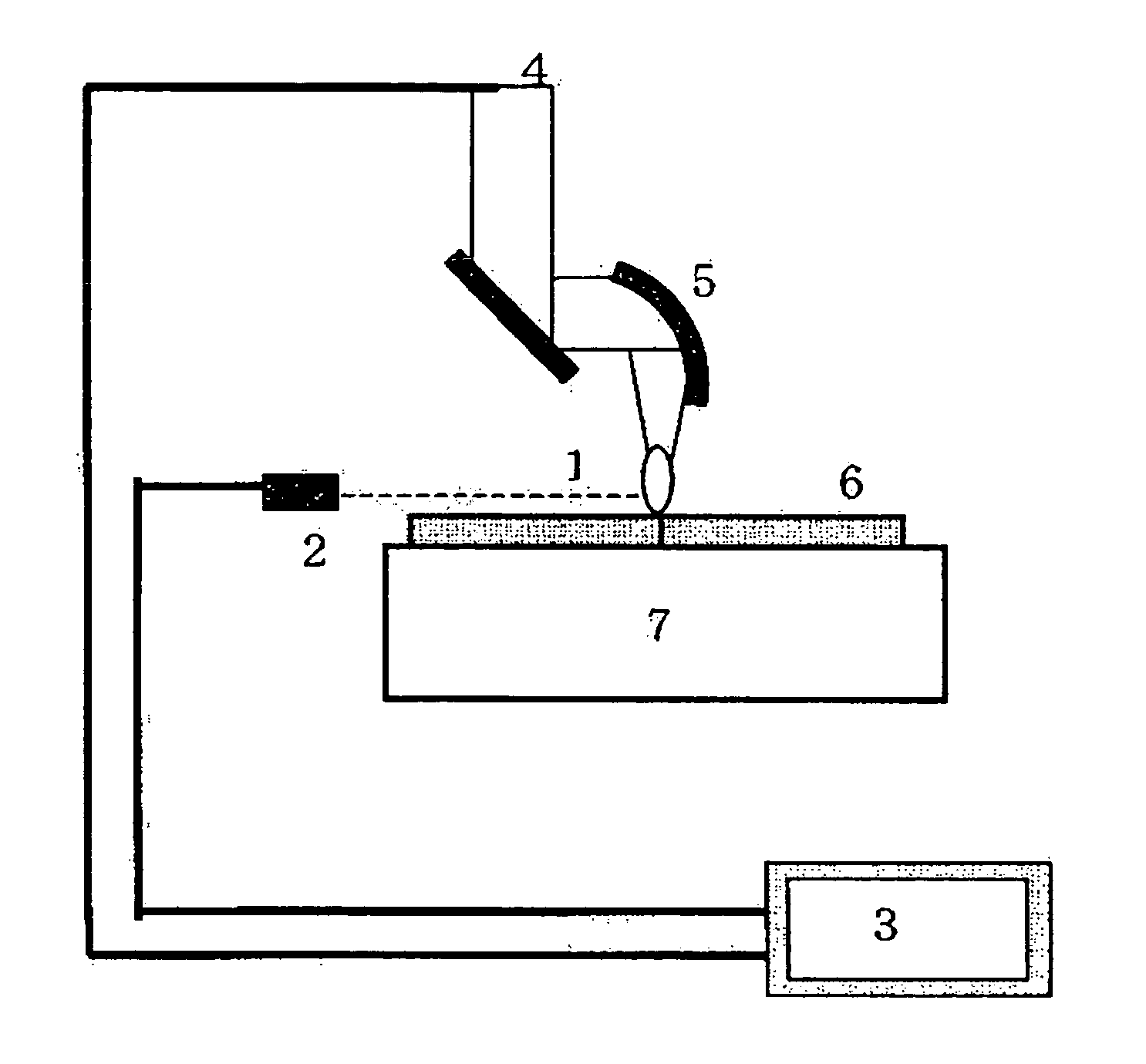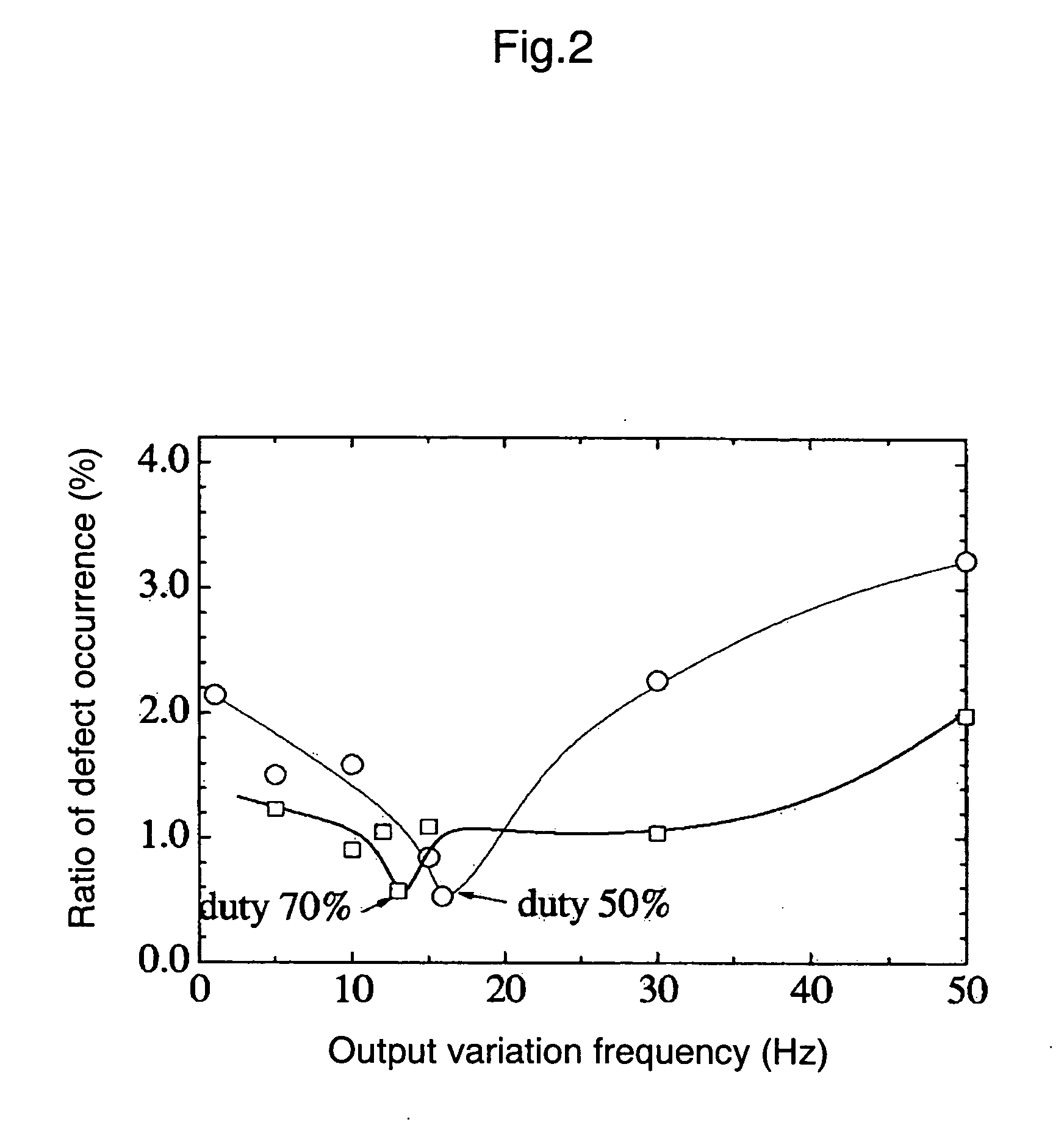Laser Welding Method
a laser welding and keyhole technology, applied in welding equipment, metal-working equipment, manufacturing tools, etc., can solve the problems of difficult to stably maintain a keyhole, easy blowhole and cracking, and weld defects such as porosity
- Summary
- Abstract
- Description
- Claims
- Application Information
AI Technical Summary
Benefits of technology
Problems solved by technology
Method used
Image
Examples
examples
[0047] Steel SM490A for general weld structure was used so that partial penetration welding was carried out on a bead-on-plate. At the time of welding, in order to prevent occurrence of the weld defects, as shown in FIG. 7, a laser output was varied by a triangular wave with peak output of 20 kW and base output of 8 kW. Rise time at which the base output varies into the peak output was 10 ms which is constant, and the frequency was changed within the range of 10 Hz to 98 Hz. The device having the constitution shown in FIG. 3 was used, and the light emission strength of the plasma at the time of welding was measured by Si photodiode 2 (Si—Pd) with a sensitivity wavelength range of 190 to 1100 μm at a sampling frequency of 50 kHz. Si—PD was installed on a horizontal extension of the same level as an object to be welded (6). A laser (4) beam was converged on the surface of the object to be welded (6) by a parabolic mirror (5) with a focal distance of 500 mm. A test piece with width of ...
PUM
| Property | Measurement | Unit |
|---|---|---|
| length | aaaaa | aaaaa |
| length | aaaaa | aaaaa |
| natural frequency | aaaaa | aaaaa |
Abstract
Description
Claims
Application Information
 Login to View More
Login to View More - R&D
- Intellectual Property
- Life Sciences
- Materials
- Tech Scout
- Unparalleled Data Quality
- Higher Quality Content
- 60% Fewer Hallucinations
Browse by: Latest US Patents, China's latest patents, Technical Efficacy Thesaurus, Application Domain, Technology Topic, Popular Technical Reports.
© 2025 PatSnap. All rights reserved.Legal|Privacy policy|Modern Slavery Act Transparency Statement|Sitemap|About US| Contact US: help@patsnap.com



